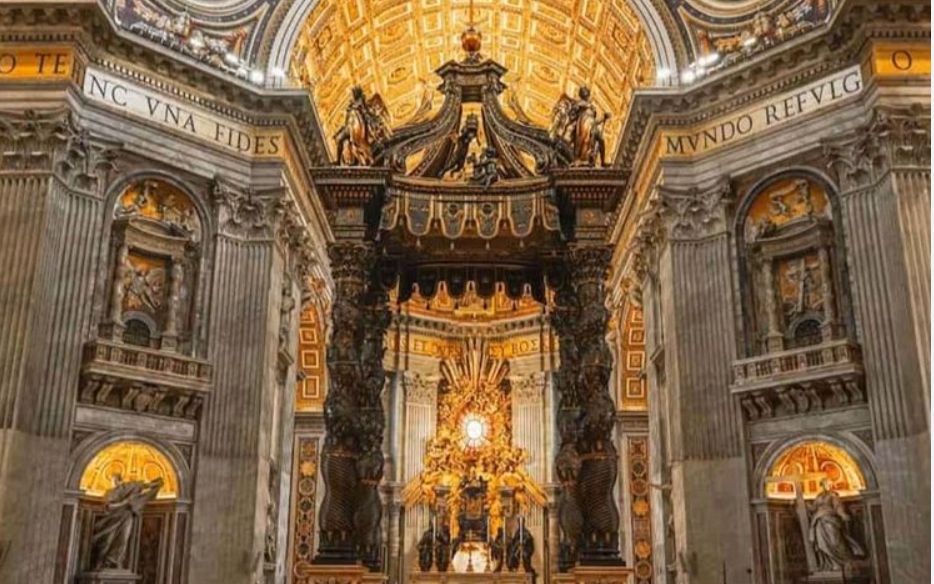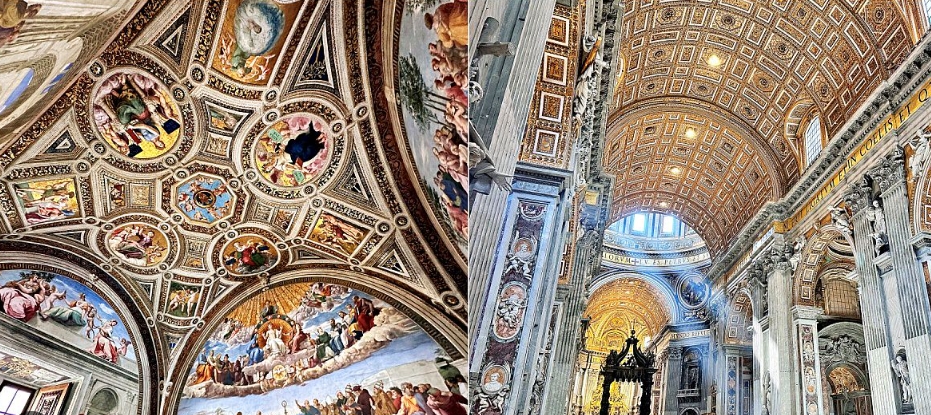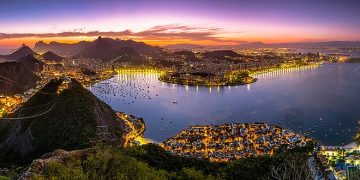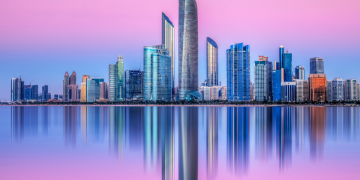St. Peter’s Basilica, as the central church of Roman Catholicism, has a deep historical background. Its construction began in the 4th century AD by the Roman Emperor Constantine on the site of St. Peter’s tomb. The establishment of this church was closely related to the rise and spread of Christianity. In order to use the power of Christianity to serve the Empire, Constantine the Great identified Christianity as the state religion of the Empire and vigorously promoted the construction of Christian buildings.
In the years that followed, St. Peter’s underwent several additions and reconstructions. In the 16th century, Pope Giulio II decided to rebuild it, and ground was broken in 1506. This project took up to 120 years, by the best Italian architects such as Bramante, Michelangelo, Raphael and others have presided over the design and construction, and finally on November 18, 1626 officially declared the completion.
The reconstruction of the church is not only an extension and enhancement of the original building, but also a profound interpretation of the architectural art and religious culture of the Renaissance. The frescoes, sculptures and other works of art in the church are the most outstanding works of the European Renaissance, such as Michelangelo’s marble sculpture “Mourning Christ” and the bronze canopy carved by Bernini, which fully demonstrate the artistic charm of this period.
In addition, St. Peter’s Basilica is an important symbol and pilgrimage site of the Catholic Church. According to the Holy Biography of the Catholic Church, it is considered to be the burial site of St. Peter, the patriarch of the Apostles, and most of the successive popes have been buried here. Every year, the Pope holds several important religious ceremonies here, attracting believers and tourists from all over the world to participate and visit.
St. Peter’s Basilica, also known as St. Peter’s Basilica or Vatican Basilica, is a Catholic religious sanctuary located in the Vatican City and one of the most important symbols of the Catholic Church. The construction of this church has a very long history, starting in 1506 and completed in 1626, over a period of more than 150 years, with the participation of many famous architects and artists.

The building of the church is huge, covering an area of 23,000 square meters, the main building is 45.4 meters high, about 211 meters long, and can accommodate nearly 60,000 people at the same time to pray, which is one of the largest churches in the world. The front of the church has a width of 115 meters and a height of 45 meters, showing the magnificent momentum. The exterior of the church adopts the classical style, the Romanesque domed vault and the Greek stone column and flat lintel are skillfully combined to form a unique architectural style.
Entering St. Peter’s Basilica, one will be struck by the gorgeous decoration inside. The interior of the church is brilliant, dark and mysterious, and all the portraits are made of marble splicing of different colors. The roof and walls are decorated with paintings on the theme of the Bible, and the frescoes and carvings of many European Renaissance artists such as Michelangelo and Raphael are preserved in the hall. The sculptures are located in the small Hall of the Virgin on the right side of the entrance door. There are 11 statues above the veranda below the church, with Jesus Christ in the middle and a bell on each side, Greenwich Mean Time on the right and Roman Time on the left.
In addition, St. Peter’s Basilica also carries a rich historical and cultural connotation. Legend has it that St. Peter, one of the founders of Christianity, was killed in Rome and buried beneath St. Peter’s Basilica. During the construction of the church, many famous architects and artists such as Donato Bramante, Raphael, Antonio da Sangaro Jr., Michelangelo, etc., left their masterpieces, making the church a gem of Renaissance architecture.
It is worth mentioning that St. Peter’s Basilica is also one of the places of pilgrimage of the Catholic Church, and the Pope will hold several ceremonies here every year, attracting believers and tourists from all over the world to visit. St. Peter’s Square outside the church is also a famous attraction, is an important part of the Vatican, the square was designed by the famous architect Benigni.
In general, St. Peter’s Basilica is not only a religious temple, but also an artistic treasure house, with its magnificent architecture, gorgeous interior decoration and precious works of art. It is one of the most important buildings in the world and one of the most famous tourist attractions in Rome, attracting a large number of tourists every year.
St. Peter’s Basilica

I. Unique features of scenic spots
Natural scenery
St. Peter’s Basilica is located in the Vatican, a special area separate from the city of Rome that is itself a holy place where nature and humanity meet in perfect harmony. The church is surrounded by green gardens and squares, with different flowers blooming in all seasons, adding a touch of natural color to this religious sanctuary. St. Peter’s Square behind the church is vast, standing here, you can enjoy the panoramic view of Rome, feel the harmonious coexistence of man and nature.
History and culture
The historical and cultural value of St. Peter’s is incalculable. As the central church of the Catholic Church, it has witnessed the historical changes and development of the Catholic Church. A large number of religious works of art and cultural relics are preserved in the church, each of which is a witness to history and a heritage of culture. From the architectural style of the church to the murals and sculptures inside, they all show the wisdom and creativity of human civilization. In addition, the church also hosts many important religious ceremonies and festivals, which not only enrich the historical and cultural connotation of the church, but also allow people to better understand and feel the culture and spirit of the Catholic Church.
Humanistic customs
St. Peter’s Basilica has a unique cultural charm. Here, you can see believers and tourists from all over the world, with different beliefs and cultural backgrounds, gathering together in this religious holy place. Religious ceremonies and festivals in the church are even more lively, where people pray, communicate and share, forming a unique cultural atmosphere. In addition, the church has attracted many artists and scholars to study and study, and their arrival has injected more vitality and creativity into the land.
- Feedback and evaluation from tourists
Positive comment
St. Peter’s Basilica is generally highly rated by visitors. They said they were deeply impressed by the grandeur, solemnity and profound historical and cultural heritage of the church. Many visitors made special mention of the frescoes and sculptures in the church, saying that they were exquisite and lifelike, showing the best of human art. At the same time, tourists also praise the religious atmosphere and cultural customs of the church, which is a place that can purify and sublimate people’s hearts.
Satisfaction data
According to statistics, the vast majority of visitors are very satisfied with the experience of visiting St. Peter’s Basilica. Whether from the historical and cultural value of the scenic spot, natural scenery or cultural customs, tourists have given high praise. In addition, visitors also expressed satisfaction with the church’s tourist facilities and services, which provided great convenience and comfort for their visit.

Value and contribution
Tourist facilities and services
St. Peter’s Basilica is equipped with perfect tourist facilities and services to provide tourists with a full range of support and protection. There are multiple entrances and exits in the church to facilitate visitors to enter and exit; There are also a number of restaurants, souvenir shops and rest areas around the area where visitors can rest, eat or buy souvenirs. In addition, the church also provides professional guide services and interpreters, so that visitors can have a deeper understanding of the church’s history and culture.
Contribution to the local economy
As one of the most famous tourist attractions in Rome, St. Peter’s Basilica attracts a large number of tourists to visit and contributes greatly to the local economy. The consumption of tourists not only promotes the prosperity and development of surrounding businesses, but also creates a large number of employment opportunities and sources of income for the local people. In addition, the church has also driven the development of related industries, such as tourism, catering, accommodation, etc., which has injected new impetus to the sustained growth of the local economy.
Fourth, travel experience
A visit to St. Peter’s Basilica is an unforgettable spiritual journey. Here, you can feel the thick history and profound culture, you can also experience the solemn and sacred religion. The magnificence of the church and the art treasures inside are dizzying and breathtaking; The religious atmosphere and cultural customs of the church make people’s hearts purified and sublimated. Here, you can meditate and understand life, and you can also exchange and share with tourists from all over the world to expand your vision. In short, St. Peter’s Basilica is a temple of religious art worth visiting, which will leave deep memories and insights for your trip.
A visit to St. Peter’s Basilica is an exciting and thought-provoking journey. Being in this religious holy place, I felt as if I had traveled through time and space and personally felt the brilliance of human civilization and the thick history.
First, I was struck by the magnificence of St. Peter’s Basilica. The dome of the church rose majestically into the sky and glowed brightly in the sun. Its architectural lines are smooth and elegant, combining classical and modern perfectly. I strolled the square around the church, admiring this architectural masterpiece with awe and admiration.

Entering the interior of the church, I was deeply attracted by the magnificent, solemn atmosphere. The space inside the church is spacious and tall, which makes people feel a sacred and solemn atmosphere. The colors on the mural are bright and rich, and each stroke seems to tell an ancient story. The image of the sculpture is lifelike, and the details are exquisite, which makes people amazed.
Inside the church, I also witnessed the amazing art treasures. Michelangelo’s marble sculpture “Mourning Christ” moved me deeply with its delicate carving and affectionate expression. The bronze canopy carved by Bernini is even more exquisite, showing the infinite charm of human art. These artworks not only let me appreciate the beauty of art, but also let me feel the power and sanctity of religious belief.
Inside the church, I also participated in a religious service. The faithful prayed and sang, their faces filled with the light of faith. I was affected by this atmosphere and prayed with them, feeling inner peace and tranquility. This experience has given me a deeper understanding of the importance of religion to human spiritual life.
In addition, St. Peter’s Basilica is a place of cultural exchange. Here I met tourists and believers from all over the world. Together, we discussed the history and cultural connotation of the church, and shared our travel experiences and feelings. This kind of cross-cultural communication has broadened my horizon and enhanced my understanding and respect for different cultures.
Overall, a visit to St. Peter’s Basilica is an unforgettable spiritual journey. It not only let me appreciate the masterpieces of architectural art and the treasures of religious culture, but also let me deeply appreciate the brilliance of human civilization and the depth of history. This trip made me think more deeply about life and faith, and it also made me cherish and respect different cultures and traditions more. I believe that this trip will become a precious memory in my life.





















